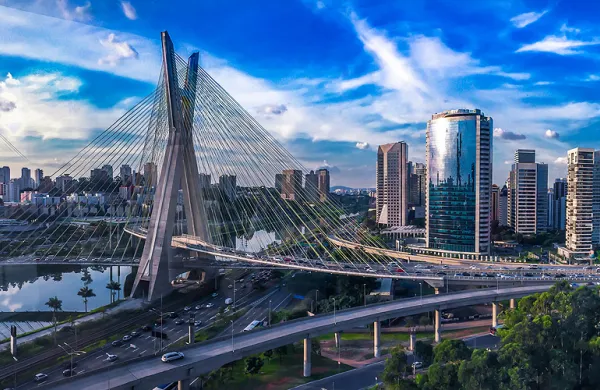To view a PDF of the report, click here.
The 10 member states of the Association of Southeast Asian Nations (ASEAN) have had good reason to celebrate in recent times. On New Year’s Eve 2015, they ushered in the long-awaited ASEAN Economic Community (AEC), a new regional trade bloc that boasts more than 600 million consumers and ranks collectively as the sixth-largest economy in the world, with a combined GDP of US$2.55 trillion. This year, the group passed another key milestone: the 50th anniversary of its founding.
“Looking back to the time when the five founding members signed the ASEAN Declaration in 1967, the region has come far,” says H.E. Le Luong Minh, Secretary-General of ASEAN. “Over the past 50 years and through a decades-long process of community building, ASEAN has fundamentally shaped the regional agenda and has thrived against all odds to become one of the most successful regional organizations.”
Despite initial concerns over whether the group would survive and criticism over its consensus-style leadership, ASEAN has achieved a surprising degree of political and economic stability. Singapore reached developed-country status with per-capita income of US$52,600 in 2016, while Thailand, Indonesia, Malaysia, the Philippines, and Brunei are moving up the ranks. Cambodia, Laos, Myanmar, and Vietnam are now seen as emerging low-cost production hubs in the global supply chain.
Institutions show increased interest
Since early 2014, a number of leading foreign investment management companies have launched equity funds dedicated to the region, among them the Templeton ASEAN Fund. While the majority of these funds focus on companies operating in the more developed markets like Singapore, Malaysia, and Thailand, they can also invest in frontier markets like Vietnam and Myanmar. “One of the great attractions of ASEAN funds is that they provide exposure to Asia without the volatility,” says Andrew Stotz, CEO of A. Stotz Investment Research. “Compared with China, this is a fairly stable market. Yet companies like Siam Cement operate throughout the region and offer high growth potential.”
Of course, the big question for equity investors is whether ASEAN can continue to post the rapid levels of economic growth that have been the envy of countries around the world. Over the past decade, GDP among the group’s member states has grown at an average of 5 percent a year. Many analysts believe that the outlook remains strong, driven by the region’s relatively young demographics and low levels of per-capita income.
Economists at Nomura are especially bullish. They predict that the big so-called ASEAN-5 nations will be among the major recipients of foreign direct investment (FDI) over the next decade. One factor behind the new trend is rising labor costs in China. Another factor is an ageing population in Northeast Asia. By contrast, the ASEAN-5 offer large and expanding domestic markets, reforms focused on boosting infrastructure and improving the ease of doing business, a more open and liberal foreign investment regime, and low-cost labor.
According to Nomura, some of the most exciting opportunities for investors are likely to be in sectors like financials, construction, infrastructure, property, and logistics.
Strong FDI is also likely to underpin regional currencies. Among the longer-term winners could be local currencies like the Philippine peso, the Indonesian rupee, and the Malaysian ringgit.
M&A remains at high levels
In 2016, according to a report by Kroll, a leader in risk mitigation, the ASEAN region recorded 534 M&Atransactions valued at US$57.9 billion. The strong momentum carried through to the first quarter of 2017 with a further 118 deals reported worth US$14.7 billion. Not surprisingly, Singapore was ASEAN’s top target for foreign inbound M&A, thanks to its strong regulatory framework, developed infrastructure, and established position as a hub for foreign multinationals.
At the other end of the scale, investors are also taking a look at Vietnam and Myanmar. Although they come with higher risks, these markets offer multi-year growth opportunities in sectors ranging from telecommunications to banking and tourism. “If you are a serious regional player and want to capture value, you have to build up a presence in these markets,” says Dhanant Subhadrabandhu, Executive Vice President at CAT Telecom in Bangkok.
Looking ahead, ASEAN leaders have drawn up a blueprint for reform — ASEAN Community Vision 2025. This roadmap aims to strengthen the AEC as a fully functioning single market and production base with a free flow of goods and services. Many analysts believe the goal could prove too far-reaching given increasing concerns over globalization and free trade. Policymakers must demonstrate farsighted, pragmatic leadership in order to sustain momentum in the region.
Perhaps the biggest challenge facing the AEC is the need to boost intra-regional connectivity. Although improved transport links and communications are very much a reality in much of ASEAN, continued trade and investment barriers mean that the dream of a vibrant single economic market isn’t entirely fulfilled. This is especially true of financial services, where much work remains to be done in order to dismantle high entry barriers to foreign competitors.
Ensuring free movement of skilled labor around the region could prove equally challenging, given professional registration requirements and protectionist sentiment in many countries.
An even more immediate threat looms in rising tensions between China on one hand, and Vietnam, the Philippines, and Malaysia on the other. These countries share overlapping territorial and maritime claims in the resource-rich South China Sea.
Yet for all the obstacles that need to be addressed, ASEAN has proved that it is no lightweight. “It has been estimated that if ASEAN is able to maintain its growth momentum, it will be the world’s fourth-largest economy by 2050," says Le Luong Minh at the ASEAN Secretariat. “The region has so much potential to be a stronger, more influential actor in the global economy.” — Ben Davies





